Reports
April 14, 2025
2024 Event Report: Relaxed BABY DAY
Index
The National Museum of Western Art, home to famous masterpieces, hosted Relaxed BABY DAY, a special event for families to enjoy the museum at a relaxed pace with their little ones. Over two days—Tuesday, September 24th and Monday, September 30th—around 500 visitors, including infants and preschoolers with their parents or guardians, explored the collection.
Families admired paintings by famous artists like Renoir and Picasso and had fun striking poses in front of Rodin’s sculptures. Parents, grandparents, and children all enjoyed spending time together at the museum, and a mini-lecture held that day introduced ways to enjoy art with kids, using gestures and songs to capture their curiosity.
A Museum of Masterpieces, Inside and Out
Located in Ueno, Tokyo, The National Museum of Western Art is also well-known for being designed by the famed 20th-century architect Le Corbusier.
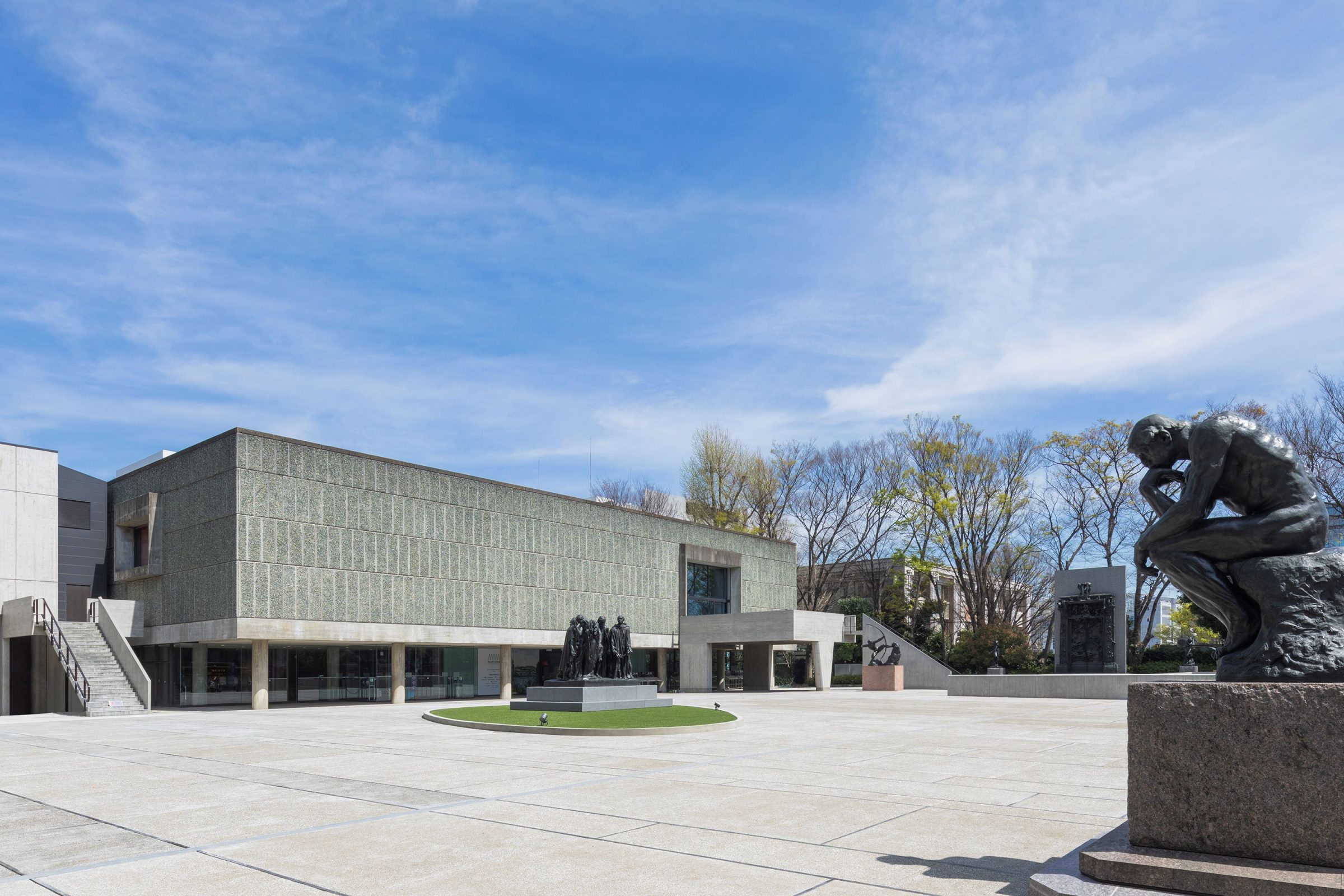
In 2016, the museum, along with 16 other sites across seven countries, was listed as a UNESCO World Heritage site under The Architectural Work of Le Corbusier, an Outstanding Contribution to the Modern Movement.
The main building showcases some of Le Corbusier’s “Five Points of Modern Architecture” including features like the pilotis (column-supported open space on the ground level).
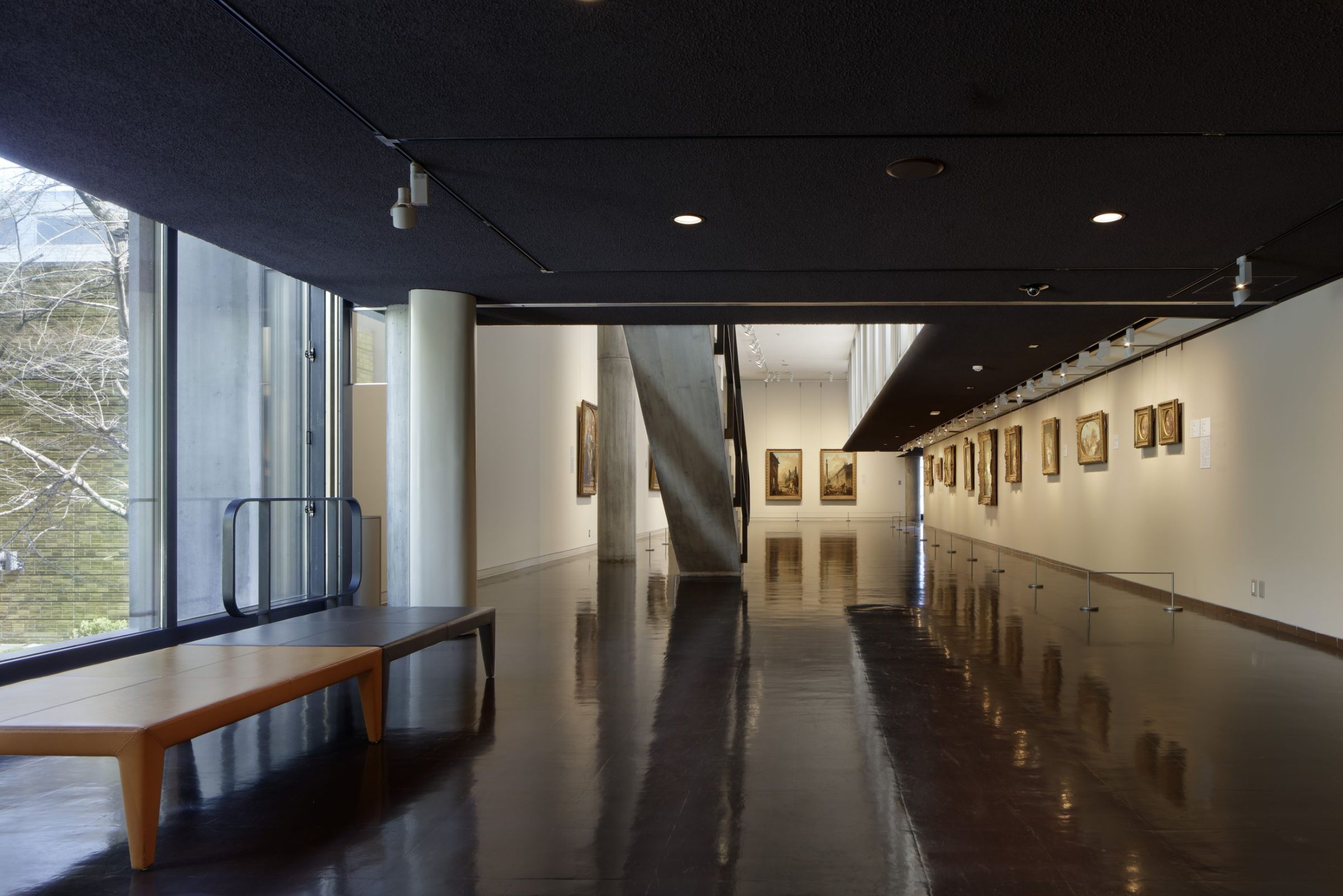
Opened in 1959, The National Museum of Western Art is built on the Matsukata Collection, a gift returned from the French government, and houses a wide range of Western art from the Renaissance to the mid-20th century. The collection features masterpieces by artists whose names are widely recognized.
This Relaxed BABY DAY event was held on a closed day for the museum. While the collection galleries are usually bustling, the number of visitors was limited to about 30 percent of the usual capacity, allowing families with strollers and infants to leisurely explore the galleries.

Singing, Dancing, and Many Ways to Enjoy
A mini-lecture was also held, offering tips on how to enjoy the museum with children. The lecturer was Ms. Megumi Tomita, Director of the NPO Art Friendship Association from Babyhood.
“Art brings out children’s curiosity and sense of initiative. When a child shows interest in a piece, you don’t need to go out of your way to praise them—just smile and share the moment,” Ms. Tomita explained.

With a supportive approach to parenting, Ms. Tomita shared ways to enjoy art that suits a child’s developmental stage. As she demonstrated how to hold a child while viewing art, she used a painting of the Holy Family featuring the infant Christ as an example, incorporating pieces from The National Museum of Western Art’s collection into her lecture.
Later in the session, participants also had the chance to play instruments like tambourines and maracas.
If you come across an artwork featuring a bird in the galleries, try singing a children’s song about birds together. When you see a sculpture in a dynamic pose, have fun mimicking the movements as if you’re dancing.
Just by rhythmically repeating the artist’s name, “Mr. Ro-din, Mr. Ro-din!” you can create a little improvised song on the spot.
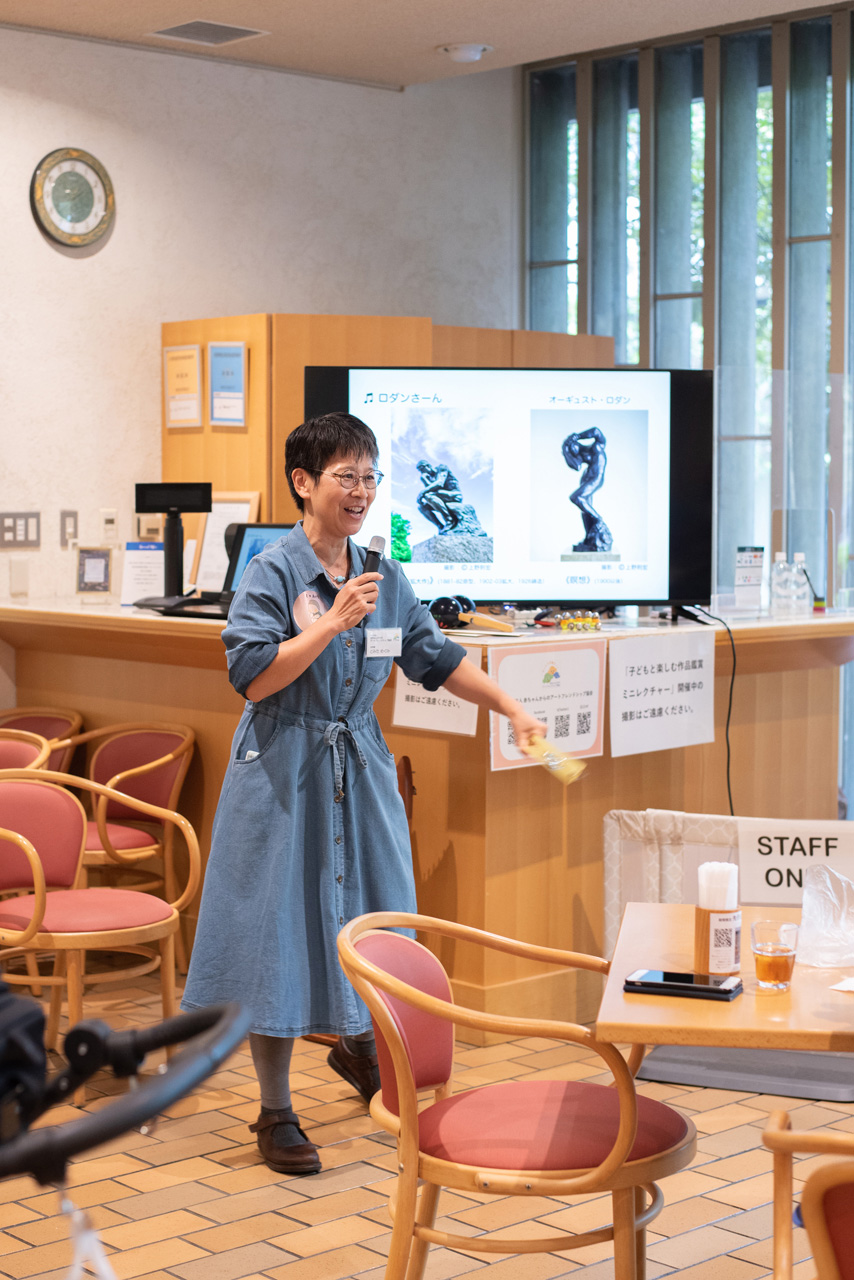
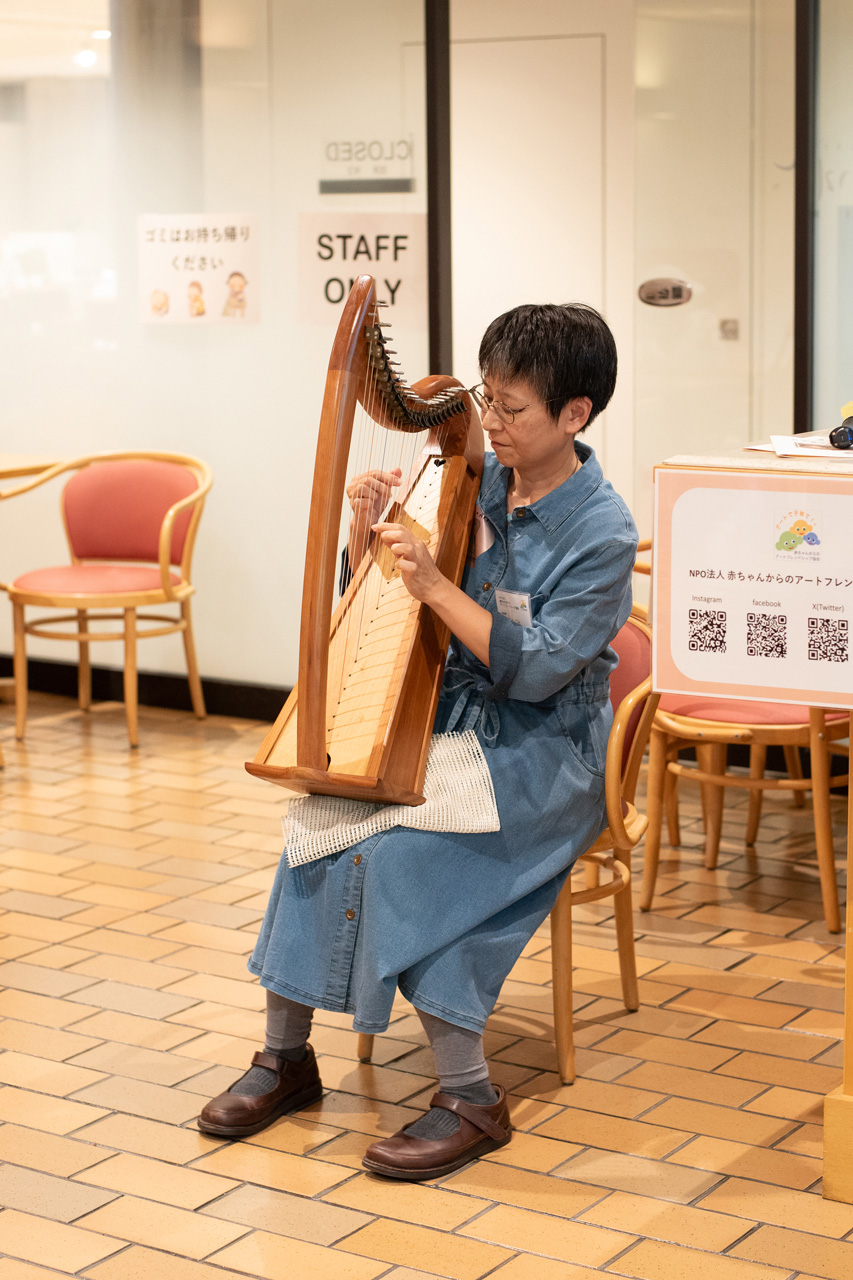
Some children who seemed a bit bored during the talk perked up when they heard the fun rhythms of the instruments. The session ended after about 30 minutes, with everyone clapping along together.
The lecture was held in Café Suiren, a restaurant overlooking the courtyard. On this day, it was opened as a rest area for visitors. With tables and sofa seating available, families could put down their belongings and feed their children milk or baby food.
Although the café was closed for regular service, staff were present in the kitchen to provide hot water for milk and to warm up baby food.
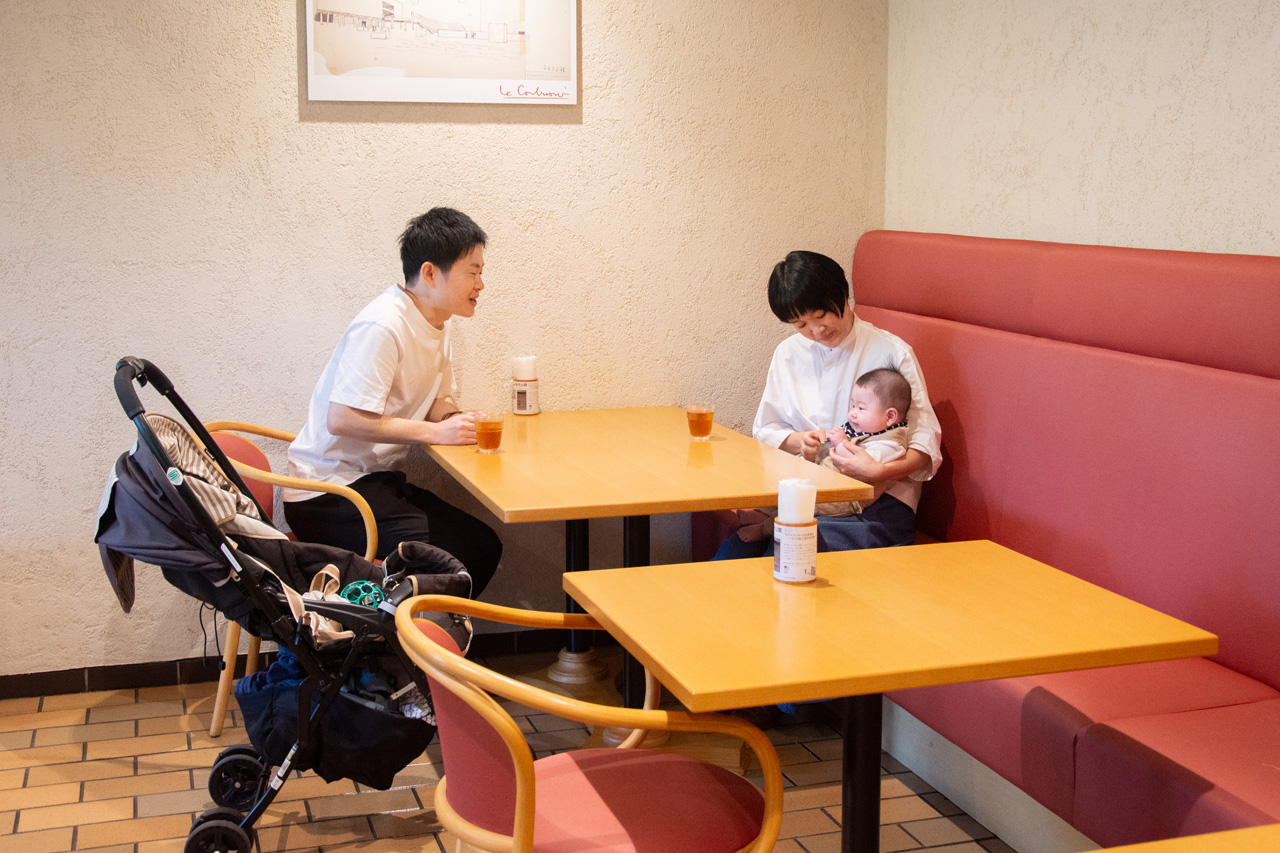
Other special adjustments were made as well, such as setting up a stroller parking area near the entrance and adding more benches along the hallways and lobby.
On these special days, even the guards and reception staff, who typically wear black jackets, dressed in casual clothing, creating a warm and homey atmosphere. The entire space was set up to warmly welcome babies and their families.
In most museums, re-entry can be difficult, or visitors have to ask for permission each time. However, for Relaxed BABY DAY, guests were allowed unlimited re-entries on the same day. Entry stickers were distributed to make re-entry smooth and easy.
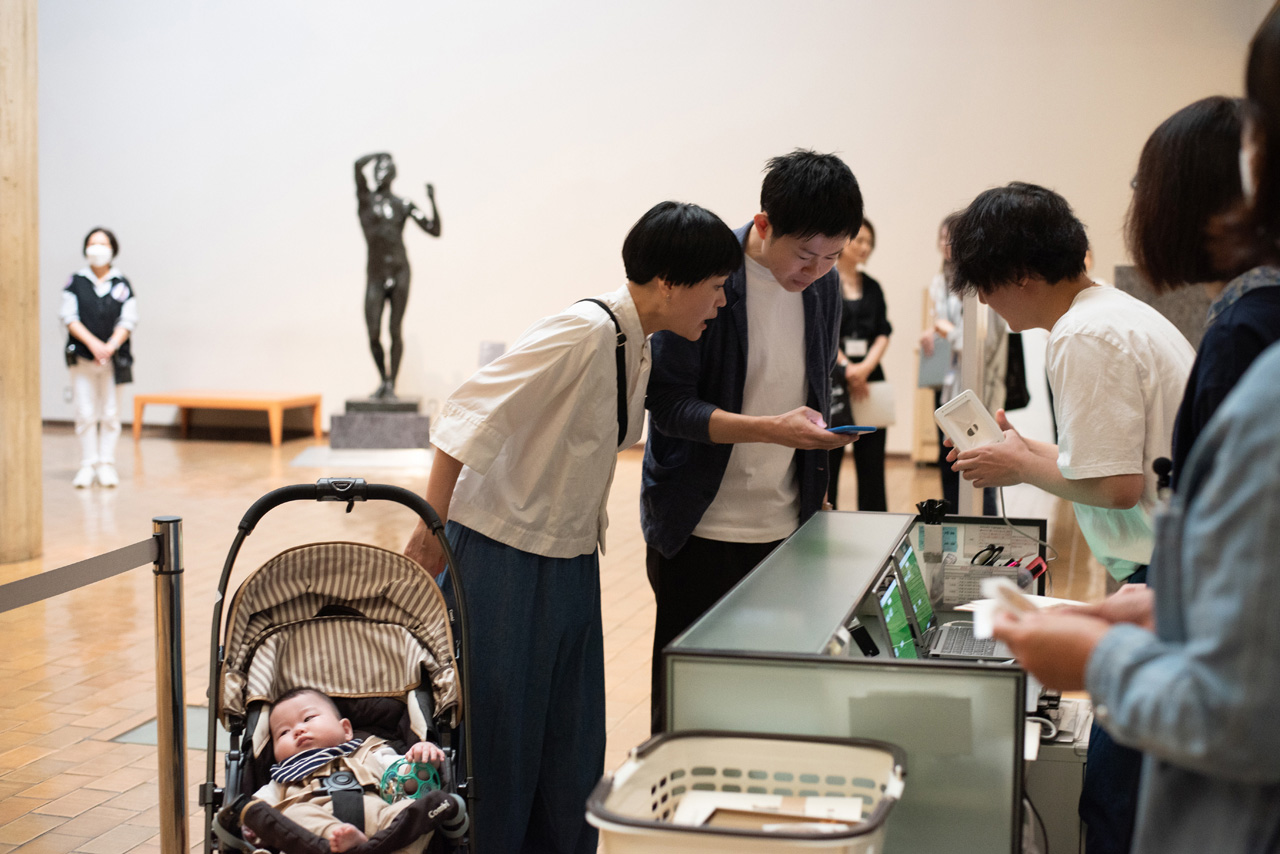
A Quiet Gallery: Perfect for Naptime?
The collection begins on the first floor of the main building. This gallery, named the “19th Century Hall” by Le Corbusier, is an open space supported by large columns, with soft light streaming in from overhead windows.
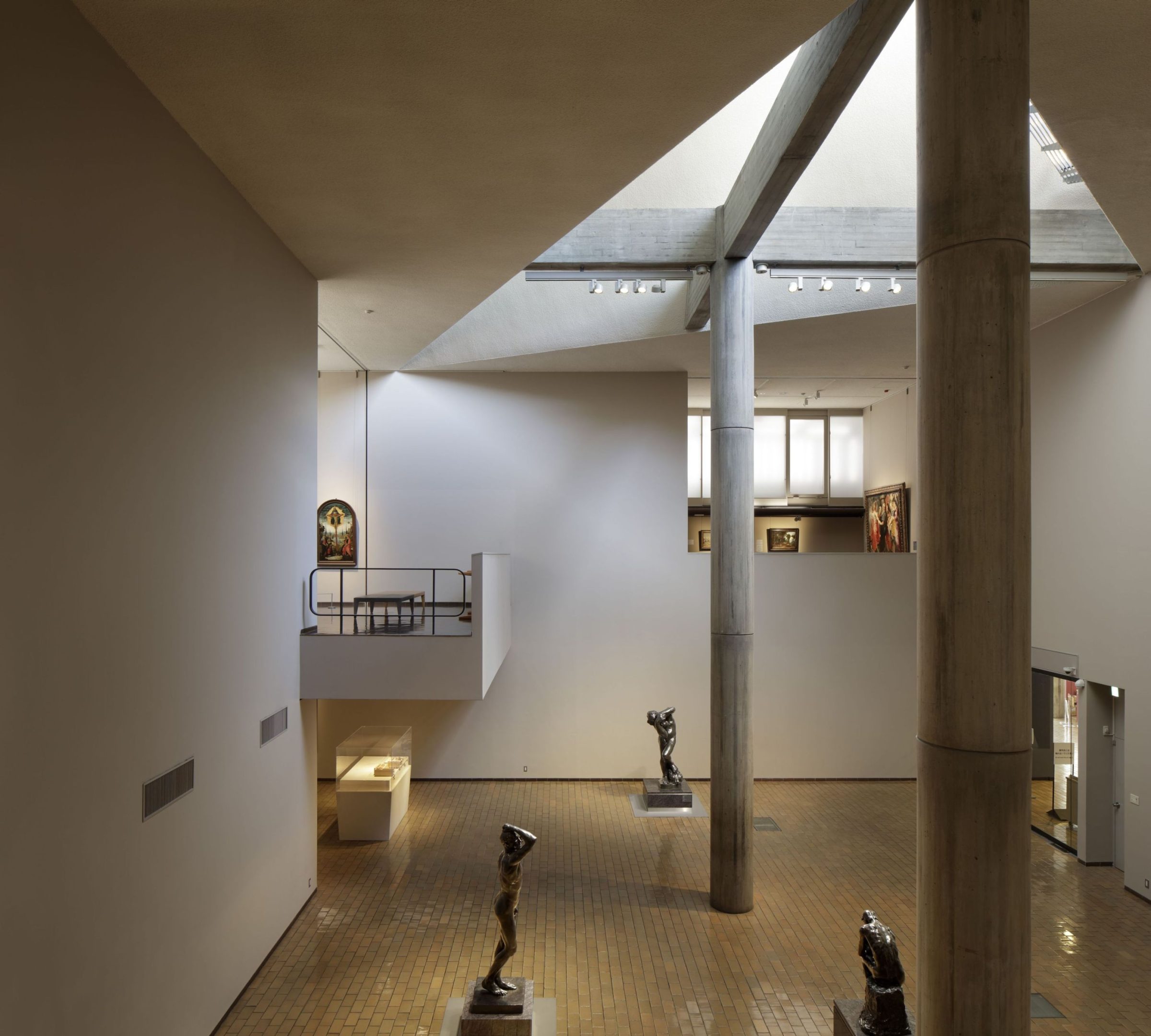
In front of the four Rodin sculptures on display, a child around two or three years old who had attended the earlier lecture was already having fun imitating the poses.
A sloped ramp leads from there to the second-floor gallery, a design feature often used by Le Corbusier in his architectural works. As you go up, the view changes gradually, adding to the experience. The step-free design also makes it easy to move around with a stroller.
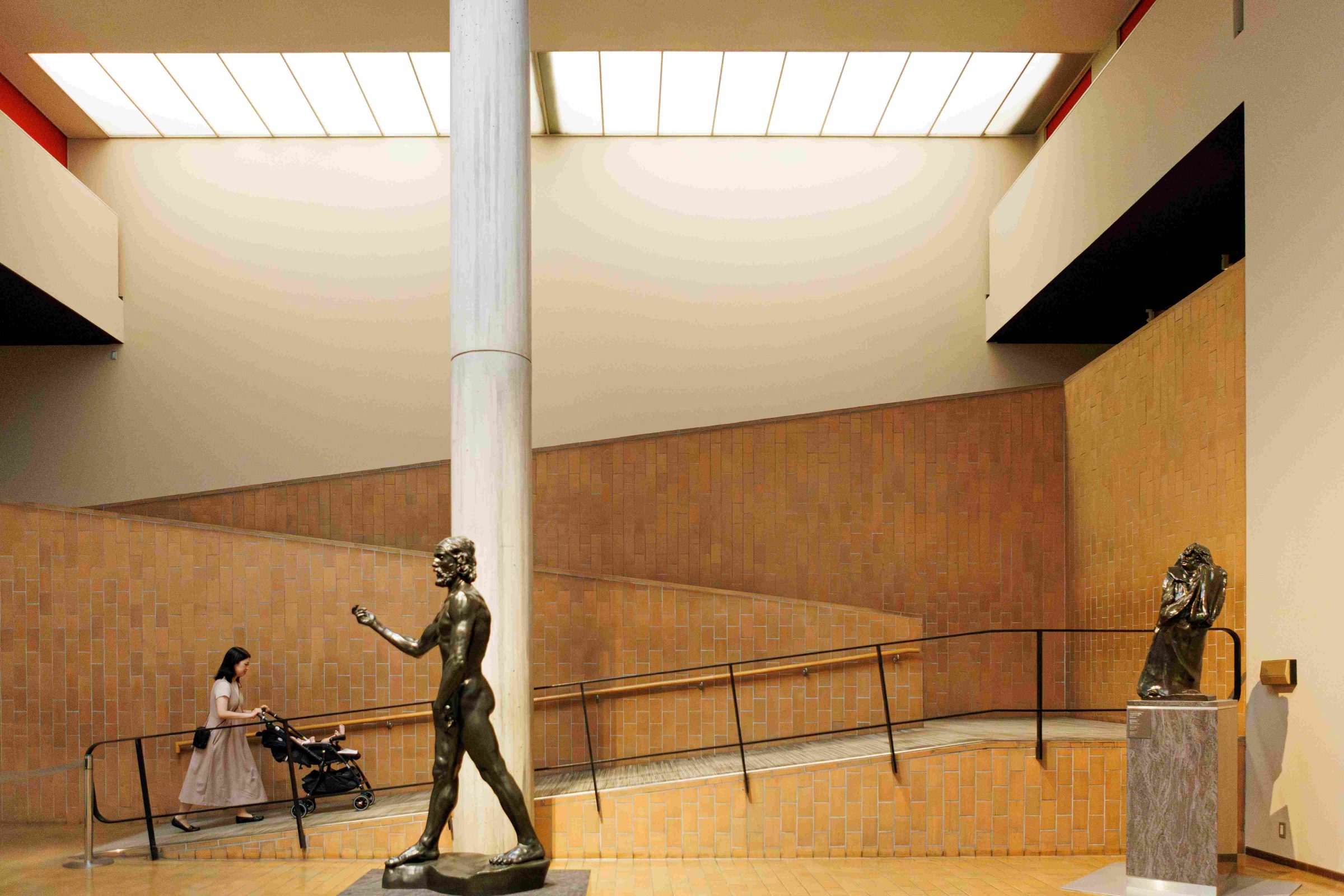
On the second floor, visitors are first introduced to religious paintings from the Renaissance period, dating from around the 14th to 16th centuries. These solemn works are displayed in frames of various shapes.
As Ms. Tomita explained, “In the dark and quiet galleries, some children even take a nap.
Naptime can be a perfect chance for parents to enjoy the collection themselves.” Just as predicted in the earlier lecture, children under twelve months old were especially calm and quiet. With a limited number of visitors, parents didn’t have to worry about maneuvering strollers around crowds. Many parents took the opportunity to view the artworks at their own pace.
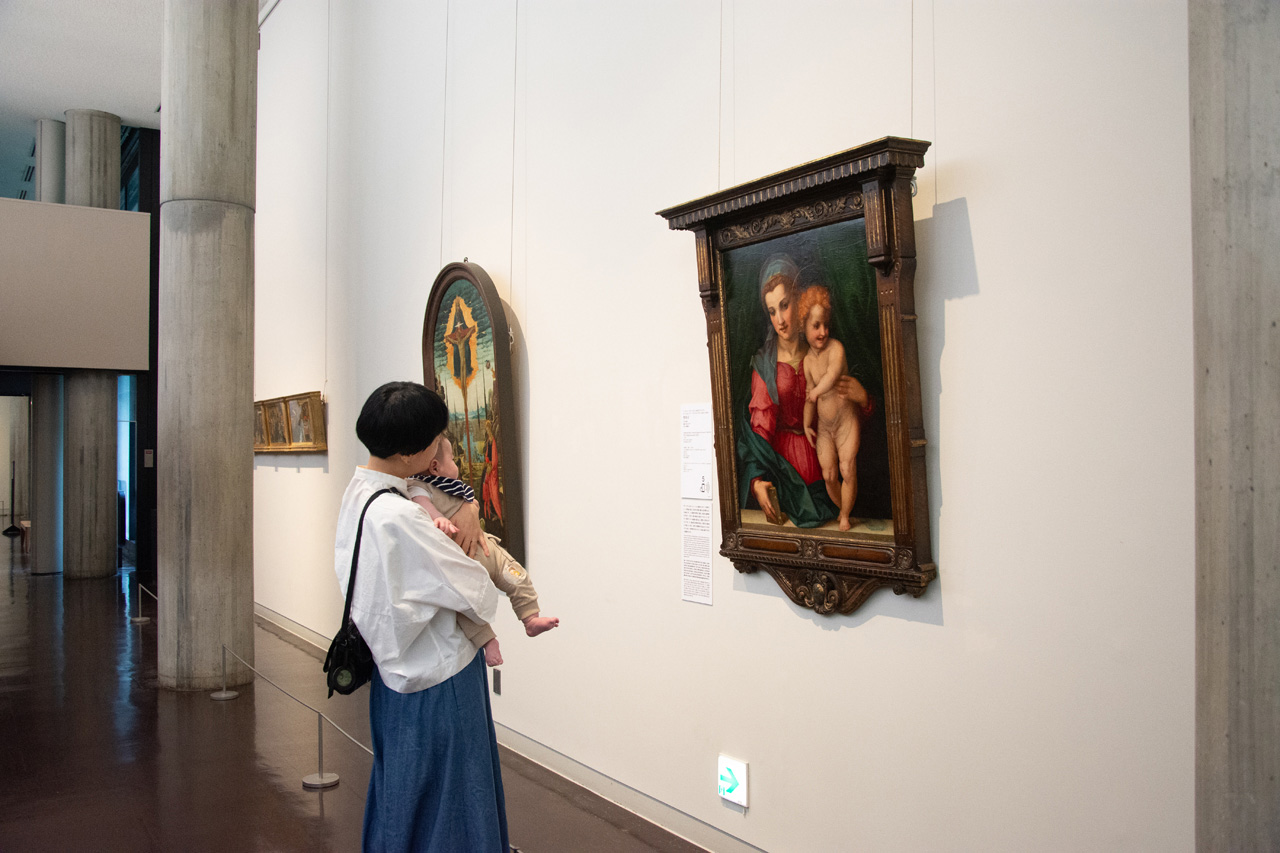
At The National Museum of Western Art, some artwork descriptions are accessible via smartphone, allowing parents to read information about the pieces even when it’s difficult to get close to the captions, such as when holding a child.
As visitors move through the galleries, the timeline of artworks progresses as well. This gallery features Two Sleeping Children by Rubens.
The children in the painting are thought to be around one to two years old, about the same age as many of the young visitors. The innocent expressions on their sleeping faces make a lasting impression.
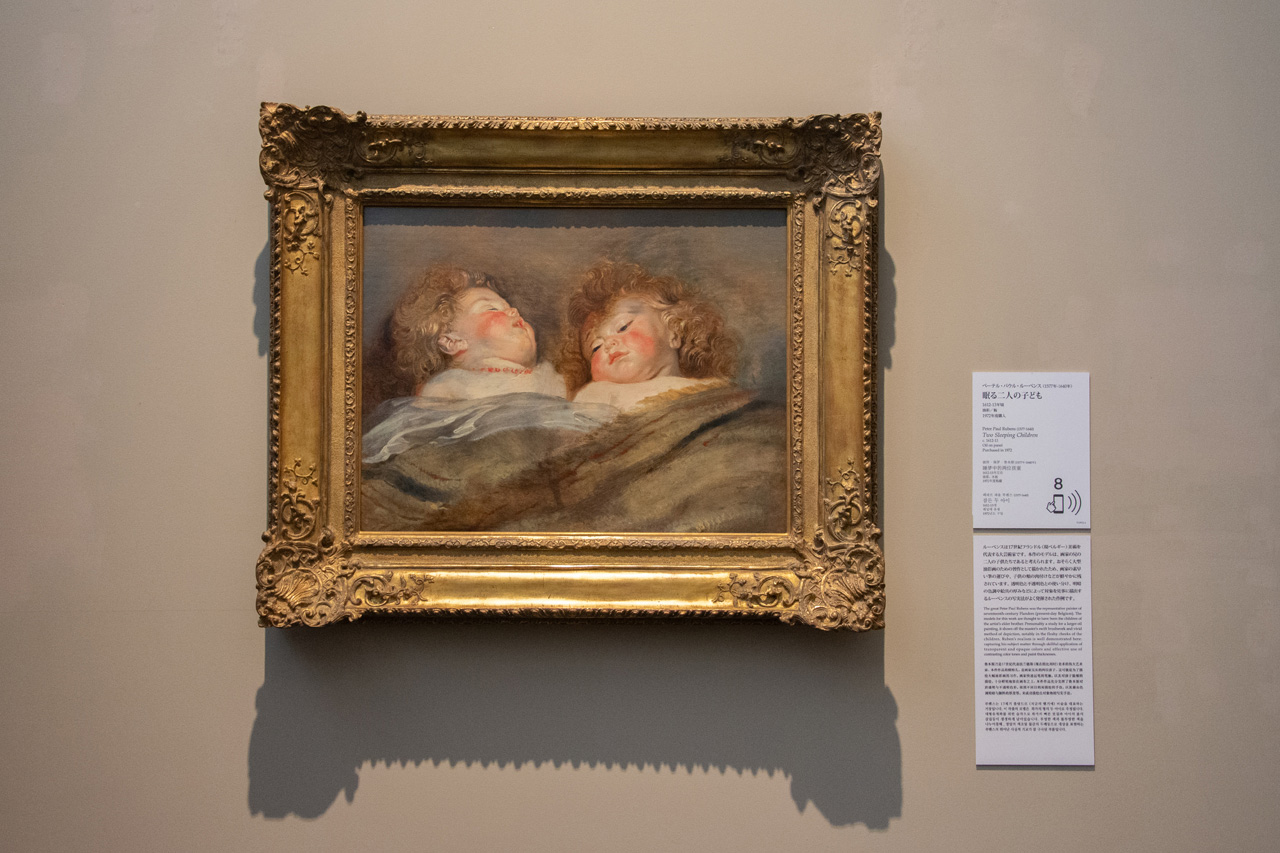
Visitors received a commemorative viewing card featuring this painting on the cover. The card was A4-sized and folded in half. Inside, the left side had space to write down titles or thoughts about artworks that caught their interest, while the right side was blank.
Information about the artworks displayed in the collection is also available on the museum’s website. After returning home, visitors can take their time filling in artist names and titles, sketching their favorite pieces, or even attaching photos taken in the galleries. This makes the card a lasting keepsake, something to look back on as their child grows.
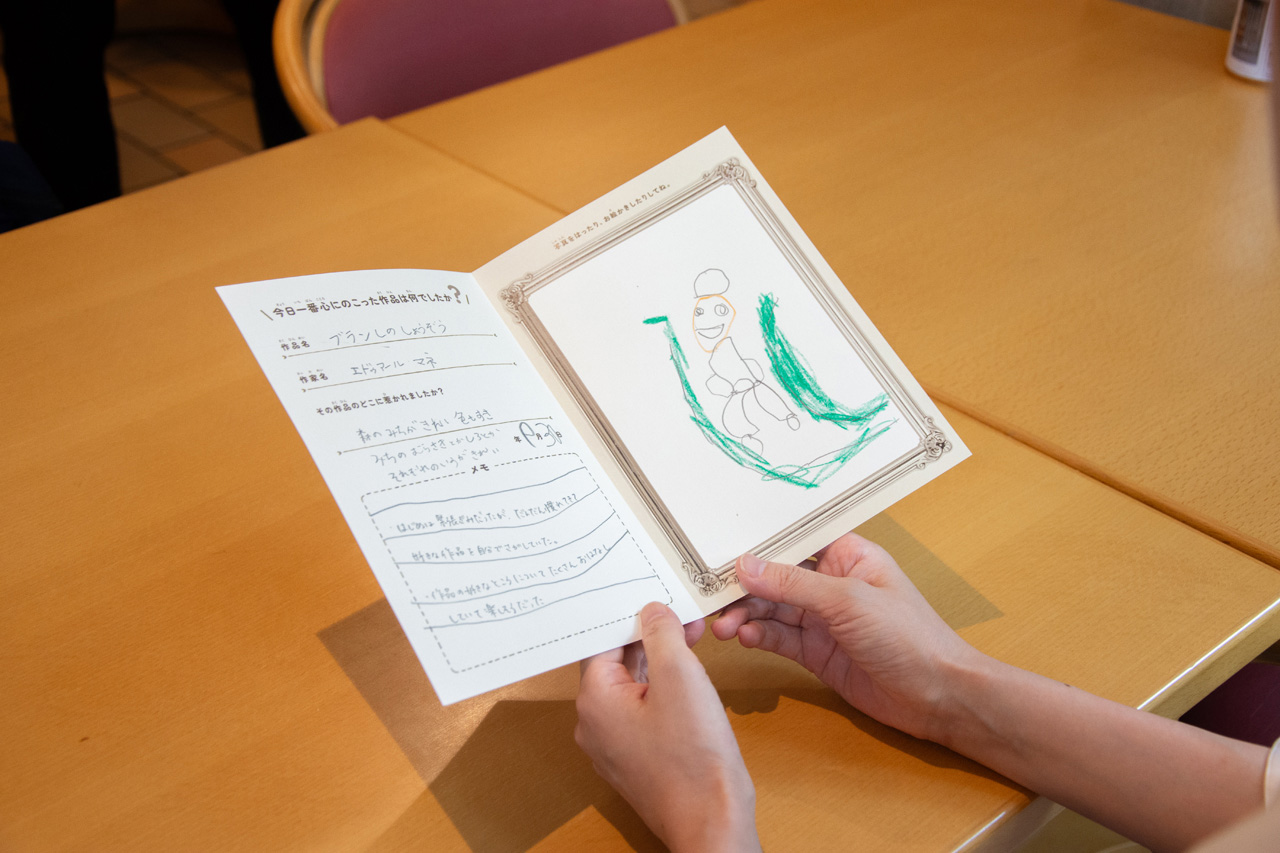
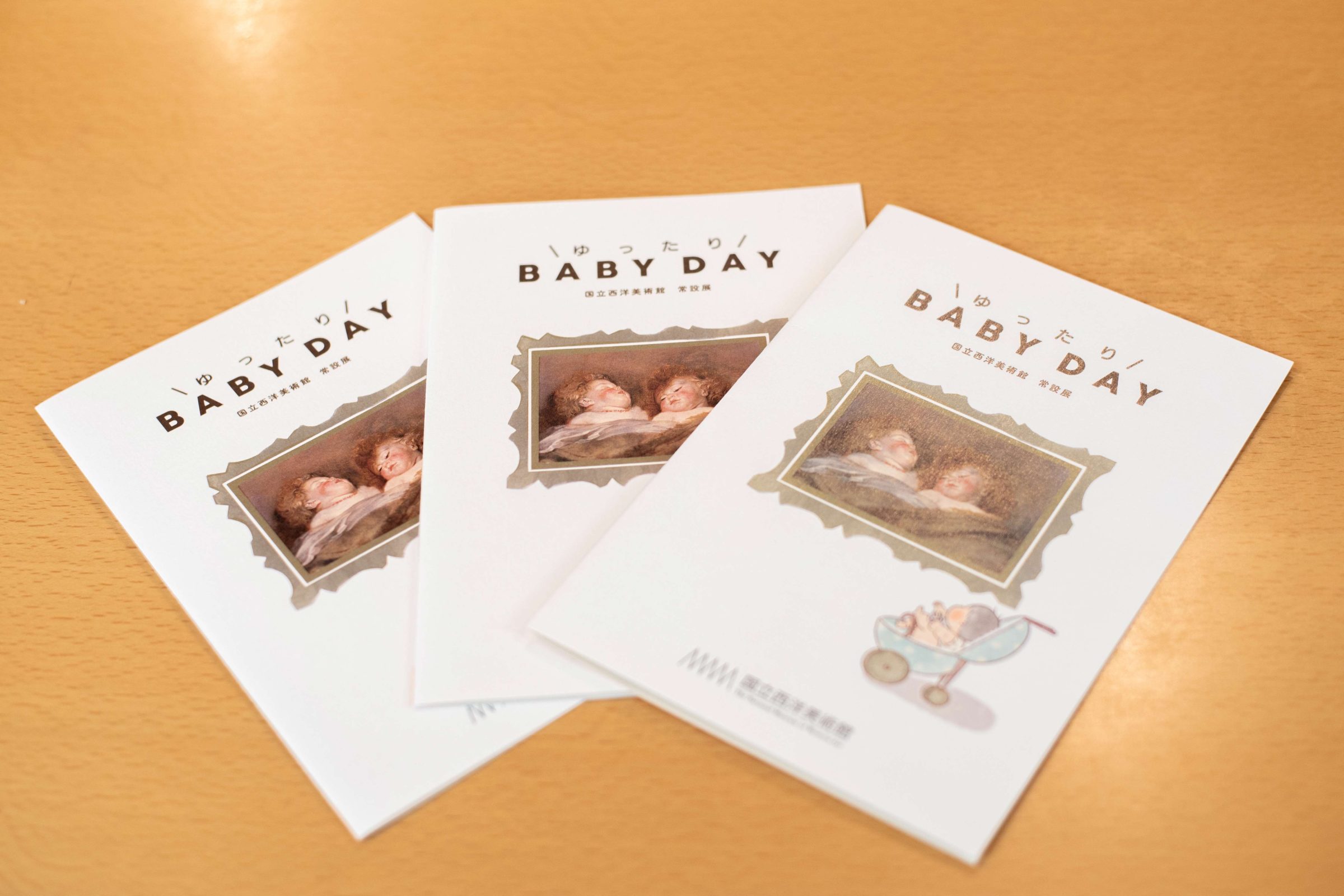
Making Memories Viewing Art Together
The collection continues through a walkway leading to the new wing, where galleries feature paintings and sculptures from the 19th century onward. These rooms display abstract paintings with simple shapes like circles and lines, along with works depicting food, animals, and people with natural expressions.
The lecture also mentions that these motifs often capture the attention of infants and toddlers. The children in the gallery eagerly reached out toward the displayed works and expressed themselves with their little voices.
Parents and guardians watched over the children’s innocent reactions with warmth. On Relaxed BABY DAY, everyone was accompanied by children, creating a shared sense of understanding that helped ease any tension.

After circling the second-floor gallery and heading downstairs, there is a room with a large window overlooking the courtyard. The distinct atmosphere of each exhibition room is one of this museum’s unique features.
Views from the balcony, scenery through the windows, and changing light stimulate children’s senses.
“My child was sleeping until we reached the gallery with Monet and Renoir. Since they’re artists I love, I’m so glad to have made memories of viewing their work together,” said one mother who visited with her 7-month-old.
The collection also features many other renowned artists popular in Japan, including Picasso, Manet, Gauguin, and Courbet.
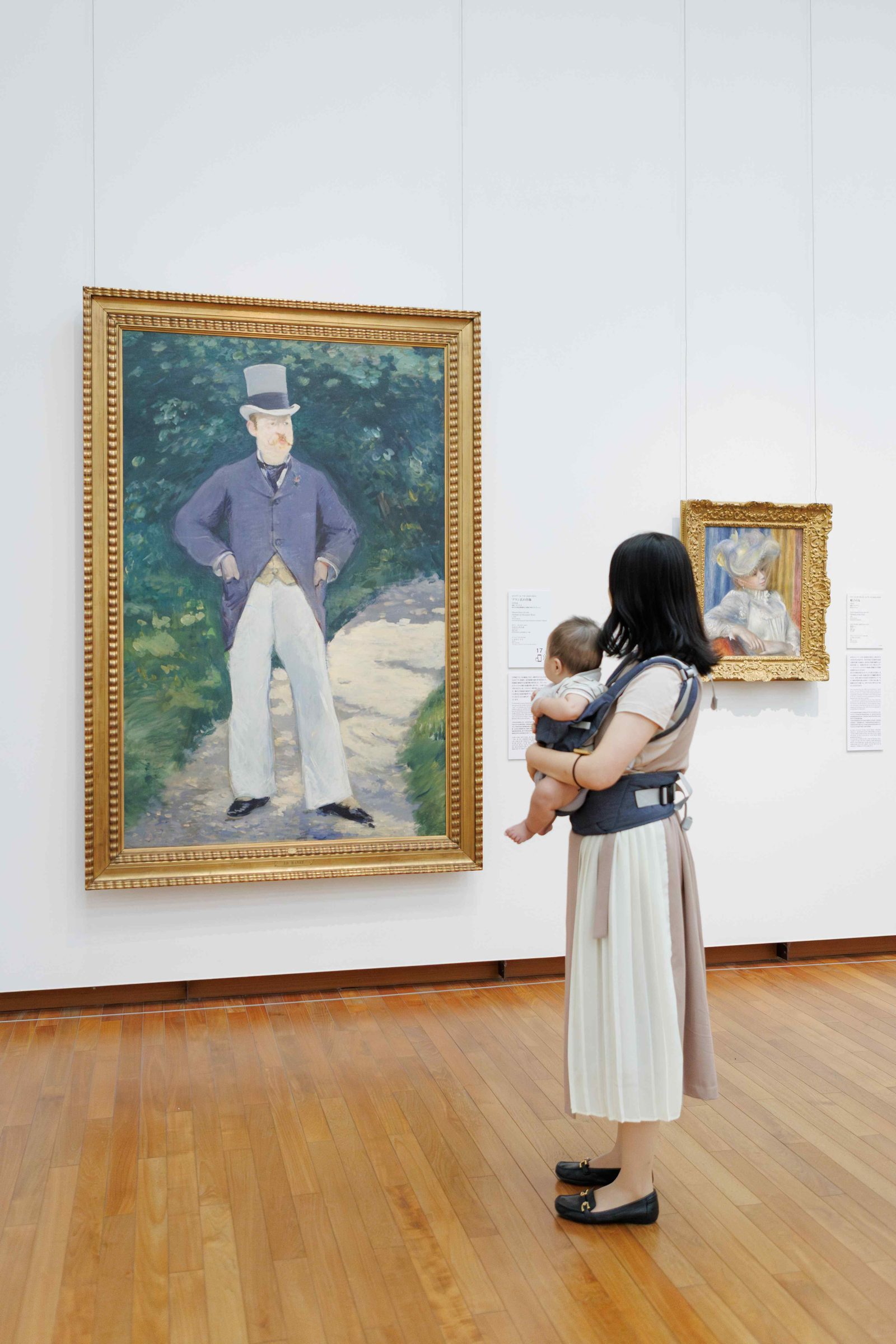
These artists are frequently featured in museums, textbooks, and on television, regardless of time or place.
If there’s another chance to encounter works by these artists someday, parents can share today’s memories with their children. This ability to take home seeds of such enjoyment is a special aspect of The National Museum of Western Art.
The museum’s collection rotates artworks periodically, but many pieces, such as the sculptures in the front garden, are available for viewing year-round.
The artworks that feel so grand when looking up at them today might look different with time.
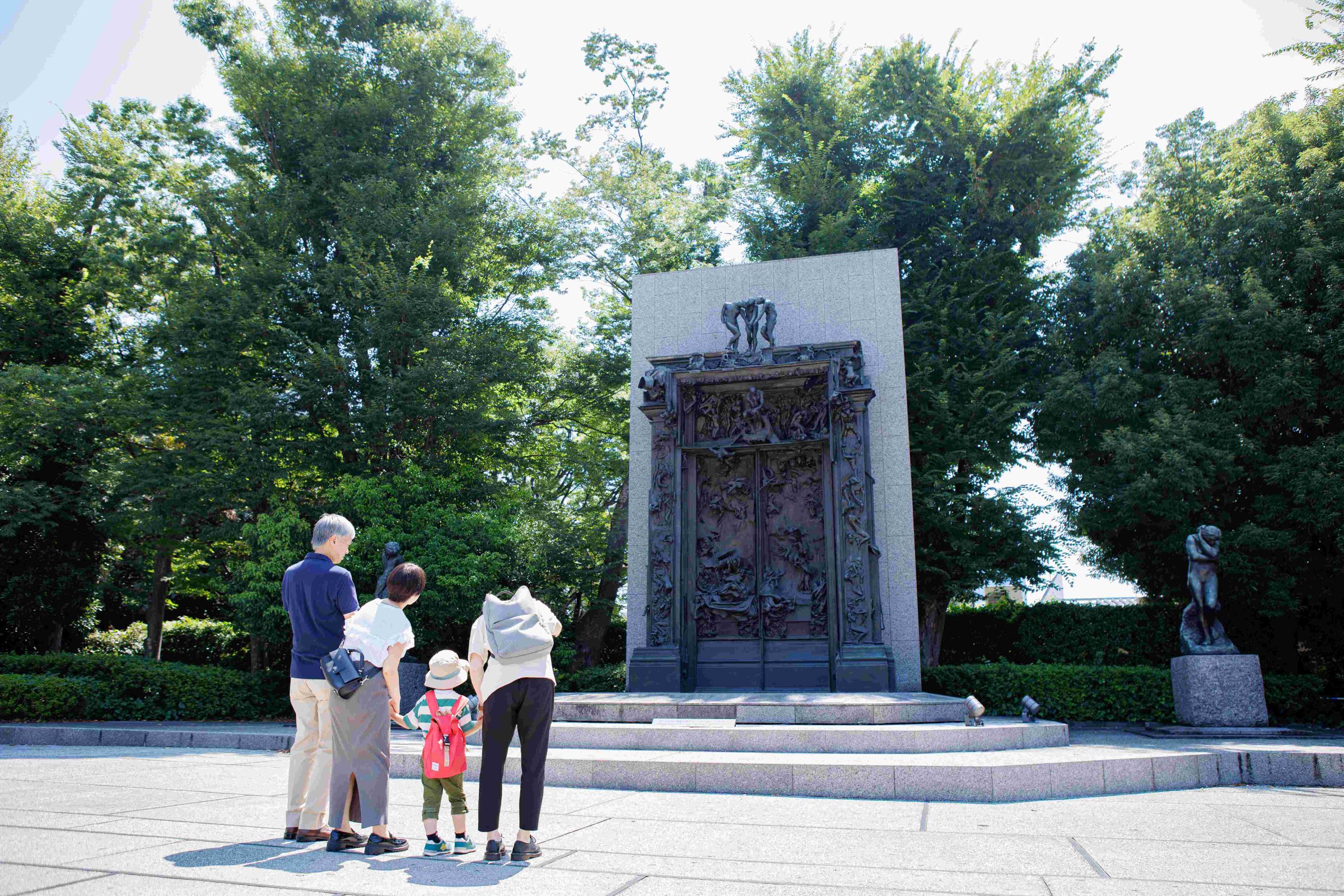
Art is a lifelong companion, growing with each family through their stages of life. Relaxed BABY DAY felt like the start of that journey.
Date of interview: September 30, 2024
Editing: Yukako Takahashi
Photo: haruharehinata
*Excluding photo “(C) The National Museum of Western Art” provided by The National Museum of Western Art
